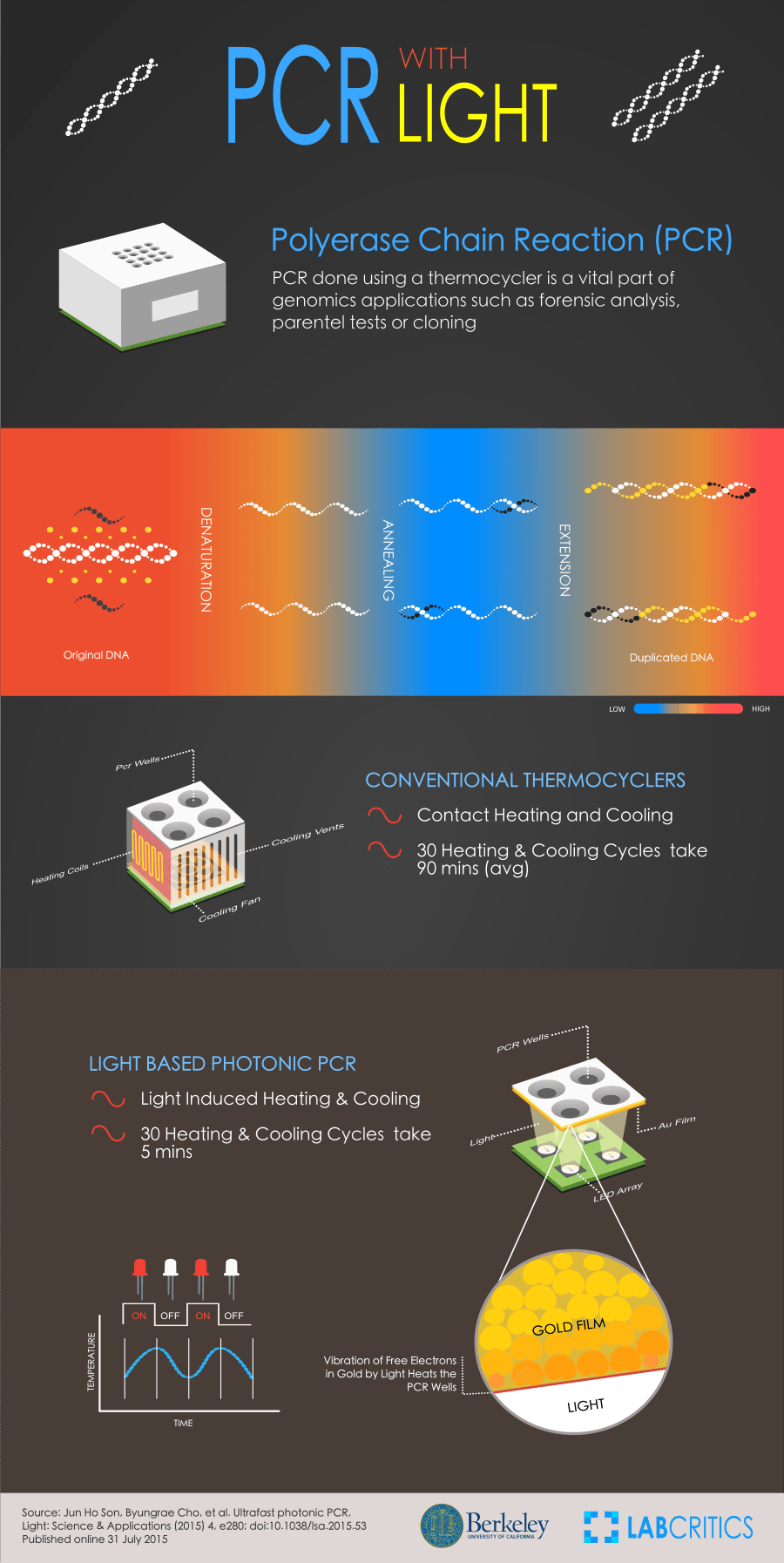Ultrafast Photonic PCR Amplifies DNA in 5 Minutes

Scientists from the University of California, Berkeley have developed a new technique to do PCR experiments at ultrafast speed. Plasmonic photothermal heating allows results within minutes with low power consumption. The breakthrough, that will allow to streamline PCR, was published in the journal Light: Science & Application.
The polymerase chain reaction (PCR) is a technique that allows to amplify a DNA fragment millions of times. It is extensively used in molecular biology laboratories around the world. It has a wide range of applications: amplification for sequencing, checking or inserting gene mutations or deletions,cloning, detection of genetic diseases, genetic fingerprinting, genotyping, etc with huge applications in personalized medicine. The technique uses primers that bind the template DNA (the DNA to be amplified) and a polymerase, generally engineered from a thermophilic organism. Every amplification generates mirror duplicate DNA that are used as a template, so the process is exponential. Every cycle switches between optimal temperatures for the denaturation, annealing and extension stages.
The main problem to streamline PCR and point-of-care use is the time it takes to complete a reaction and the power consumed by heating up and cooling down the sample. On an average 30 cycles of heating and cooling take around 90 mins.
PCR at the Speed of Light
Dr. Lee and coworkers decided to improve PCR performance by plasmonic photothermal heating. Electrons on a golden surface -which absorbs light quickly and efficiently- were irradiated with LED light. By ultrafast photon–electron–phonon couplings, electrons started moving faster and heating up the area. This way, sample wells embedded in the metallic surface were heated up at 13 ºC per second.
Switching off the light caused the temperature to drop at 6.6 ºC per second, due to fast heat dissipation through the thin gold film. A typical one hour, 30 cycle experiment can be run in 5 minutes. Future steps are aimed to develop diagnostic chips to use in emergency rooms, points of care, rural hospitals, and other hardly accessible places.
Source: Ultrafast Photonic PCR, Light: Science & Applications (2015) 4, e280; doi:10.1038/lsa.2015.53
Published online 31 July 2015

